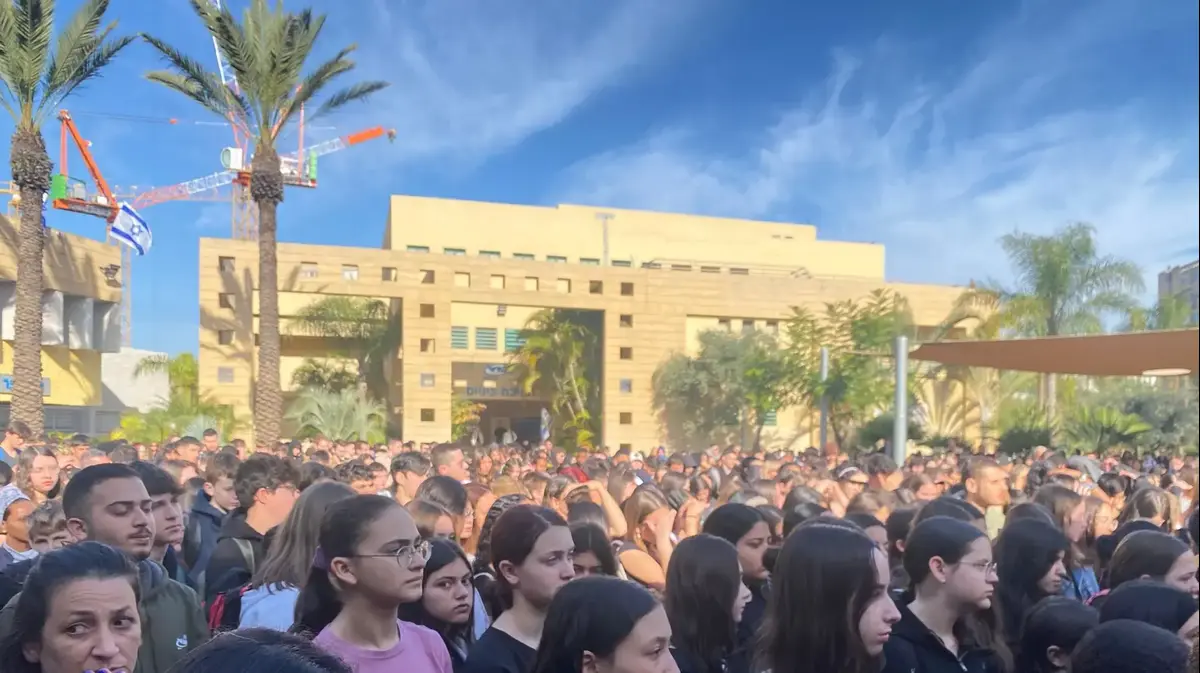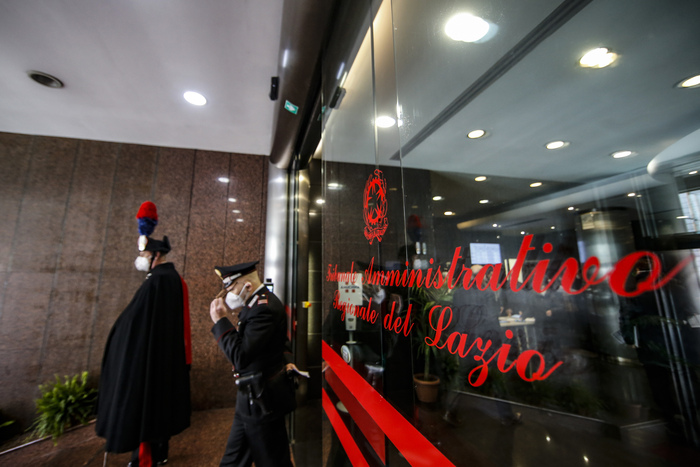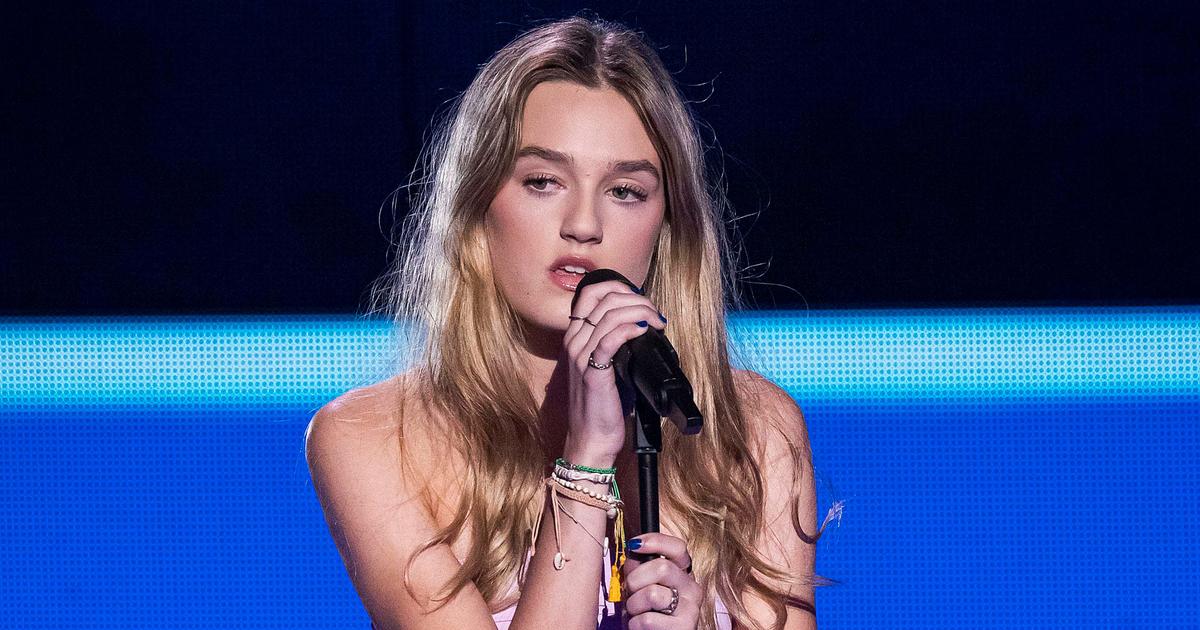Teachers welcome students in Dayton, Ohio, on March 1. MEGAN JELINGER / Reuters
8-year-old Elisa is elated.
Also a little nervous.
This Monday he will again attend face-to-face classes at a public school in Montgomery County (Maryland).
The last time he stepped in a classroom was a year ago, and since then he has been bored, cried and frustrated at times as a result of the remote learning system that forced the pandemic.
Although his
online
classes
They started at 9.00, she would connect half an hour before to talk with her friends, who did the same.
At recess, no one got up from their seats.
Elisa doesn't like Zoom very much, but the thirst to socialize wins.
She is one of the millions of students who, from coast to coast in the United States, this week will cherish the new normal from a classroom.
However, there are still dozens of cities that continue to have closed schools, while the social gap widens and the anxiety of minors increases.
In the United States, the country hardest hit by the coronavirus, the reopening of schools is tinged with political overtones and stands out for its slowness compared to most countries on the other side of the Atlantic.
Republican territories have been more flexible than Democrats in the health guidelines that must be met to open classroom doors.
That is why there are States like Florida or Wyoming, where classes have been face-to-face from Monday to Friday for months, while in Maryland or California, less than 20% of students can attend an educational center, according to the Burbio tracking portal.
The decision on the reopening of schools rests mainly with the authorities of the districts and educational centers, who must weigh the risks of contagion if they open, and the academic, economic and social impact, if not.
Meanwhile, in the big picture you can hear the teachers' unions demanding safety guarantees and the parents pressing to speed up the process 12 months after the closure.
Second of pandemic: this is how you fight daily to keep the school open
A lounge, a bar and a class: this is how the coronavirus spreads in the air
“It frustrated me that the other schools reopened and Elisa's did not.
Their course went from 24 children to 19 [dropouts in public schools have increased in several districts]… It was evident how certain families found it too complex, ”explains Gabriela Hillieger, Elisa's mother, who considers that the educational staff It has done a “titanic and heroic” job, but the local authorities are up to it.
For the return to class, the parents made a collection to buy disinfectant and resigned themselves to no one taking the temperature of the students at the entrance.
Hilliger, who has a three-year-old in a private daycare, sees the contrast in infrastructure and equipment.
Health experts have repeatedly warned that remote classes disproportionately harm children from low-income families, students with disabilities and minorities.
Negative effects
This Saturday, a few streets from the White House, outside City Hall, a group of parents and students demonstrated to demand the complete reopening of the schools for the next academic term, which starts at the end of April.
Washington's public schools now serve just 20% of the student body, and some may not fully reopen until September.
Schools must follow local guidelines that limit class sizes to 11 students and guarantee a distance of one and a half meters.
The protesters called for removing those rules.
“So what school do these kids go to?
They must have great access to medical care, just in case, and transportation, ”wrote the Washington group Black Lives Matter on Twitter in relation to the protest.
María Vethencourt, a psychologist at the Ayuda foundation, dedicated to providing services to immigrants with limited resources, explains that in the most needy communities, educational centers are the space that children have to tell their problems or where educators detect problems such as cases of child abuse.
"You can't see that on the screen, there's no such support system," he says over the phone.
Among his clients, he sees how many have had to quit their jobs to take care of their children or have been laid off as a result of the crisis.
In other cases, the children are left in the care of their older siblings.
“Emotionally, this may have limited the development of social skills and put a brake on academic learning.
There are children who have lost opportunities ”, says the specialist.
The proportion of mental health related visits to the emergency room for teens ages 12 to 17 increased 31% between March and October 2020, compared to the same period last year, according to the Center for Disease Control. (CDC).
Studies show higher rates of depression and anxiety.
In a survey by the advisory body, 25.5% of young people between the ages of 18 and 24 said they had seriously considered committing suicide in the last month.
The percentage was higher than that of front-line healthcare workers, unpaid elderly caregivers, or African American and Latino grocery store replenishers.
In the midst of this impossible scenario for the vast majority of families with children, the CDC published in mid-February guidelines for schools, from early childhood education to high school, to receive students again.
"Schools should be the last to close after all other mitigation measures in the community have been employed, and the first to reopen," the advisory body noted.
The document indicates that vaccinating teachers should be a priority, but not a requirement for reopening.
Some teacher unions, dissatisfied with the CDC's guidance, demand protections regarding air quality within schools.
Los Angeles continues to educate
online
The three largest educational districts in the country allow you to take the pulse of progress.
New York, with more than a million students, welcomes high school students for the first time on Monday, joining those of elementary school.
Half of the 488 institutes will have all the students five days a week.
Los Angeles, with more than 600,000 students, continues in large part with the virtual system due to spikes in infections in California.
This Wednesday, the authorities announced that, if the teachers are vaccinated and the cases drop, the minors will be able to return in mid-April.
And Chicago, after tense negotiations between the city and the teachers union - they threatened to go on strike - reopened in February.
Although the youngest students can already go to class, the secondary students still do not have a return date.
President Joe Biden made it a goal for most schools to be open in their first 100 days.
On Thursday he crossed the equator of the calendar and the general panorama leaves serious doubts about whether he will achieve the task.
In addition, the White House has sent mixed messages regarding what they consider to be an “open” school - it can be a few hours, a few days or a whole week - depending on how they choose to celebrate the 100th, whether they celebrate or not.
The Democratic president is confident that his rescue plan, enacted on Thursday, will speed up the process and balance the balance between private and public schools.
The schools will receive 130,000 million dollars for the safe reopening plan, which includes the purchase of protective equipment, upgrades of ventilation systems and medical personnel.









